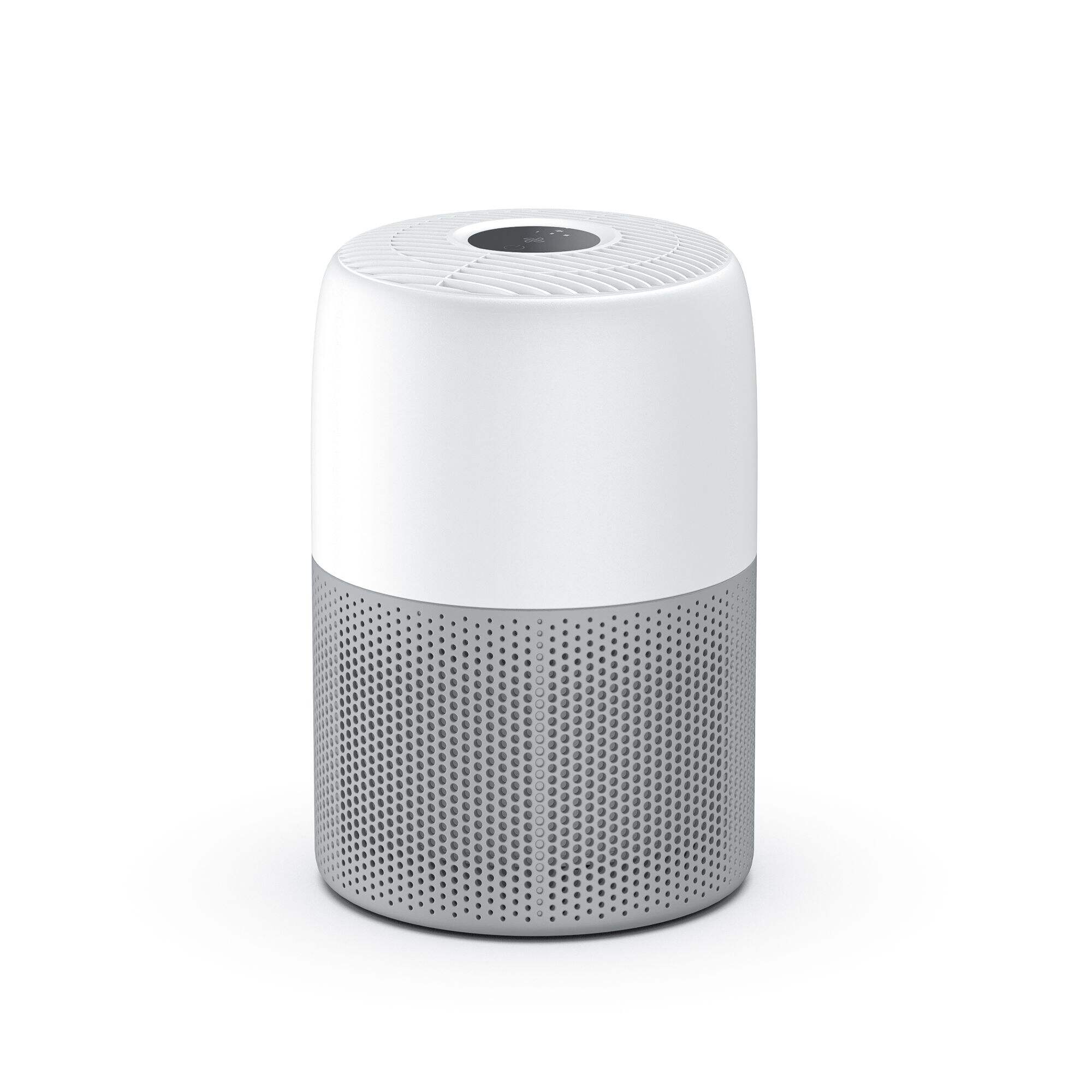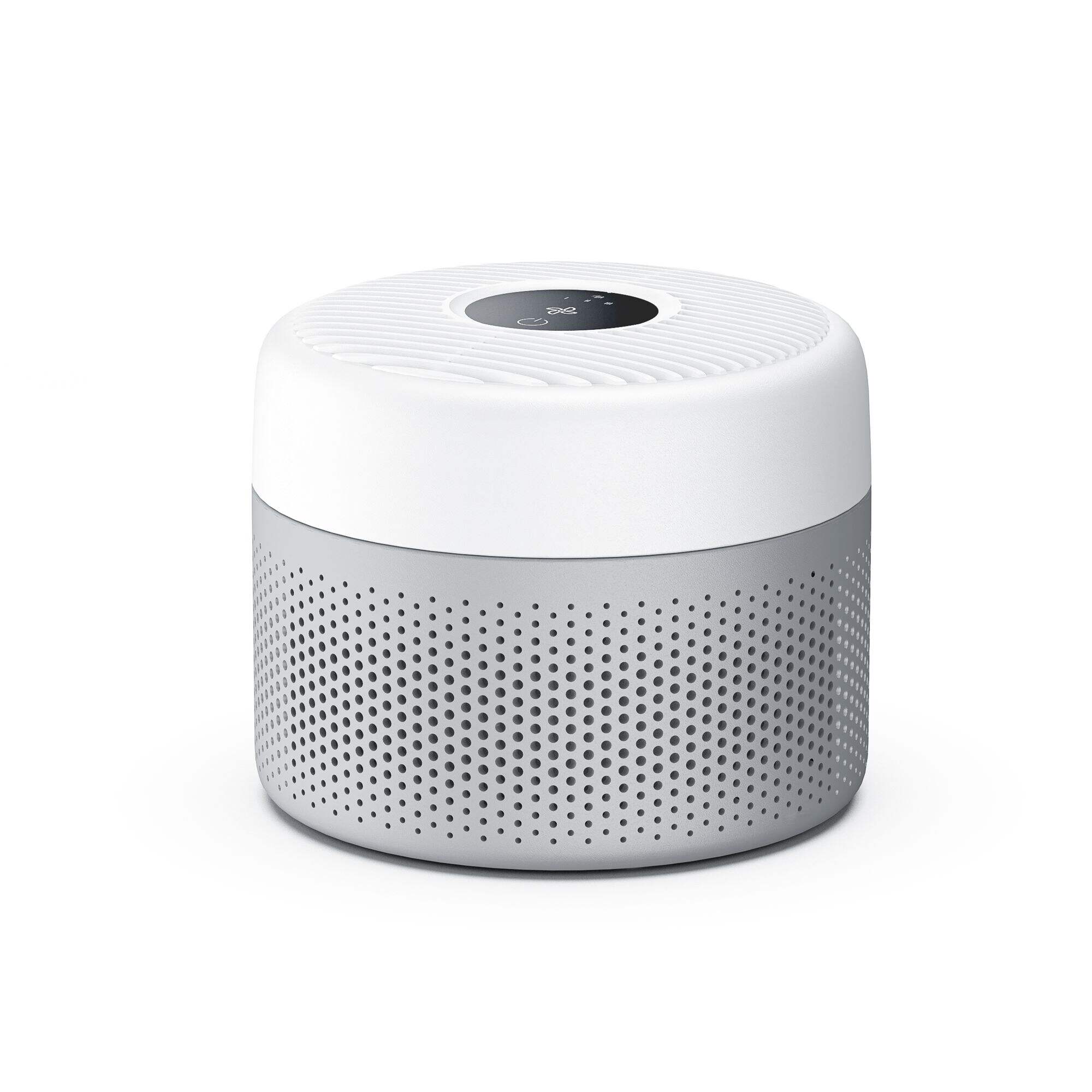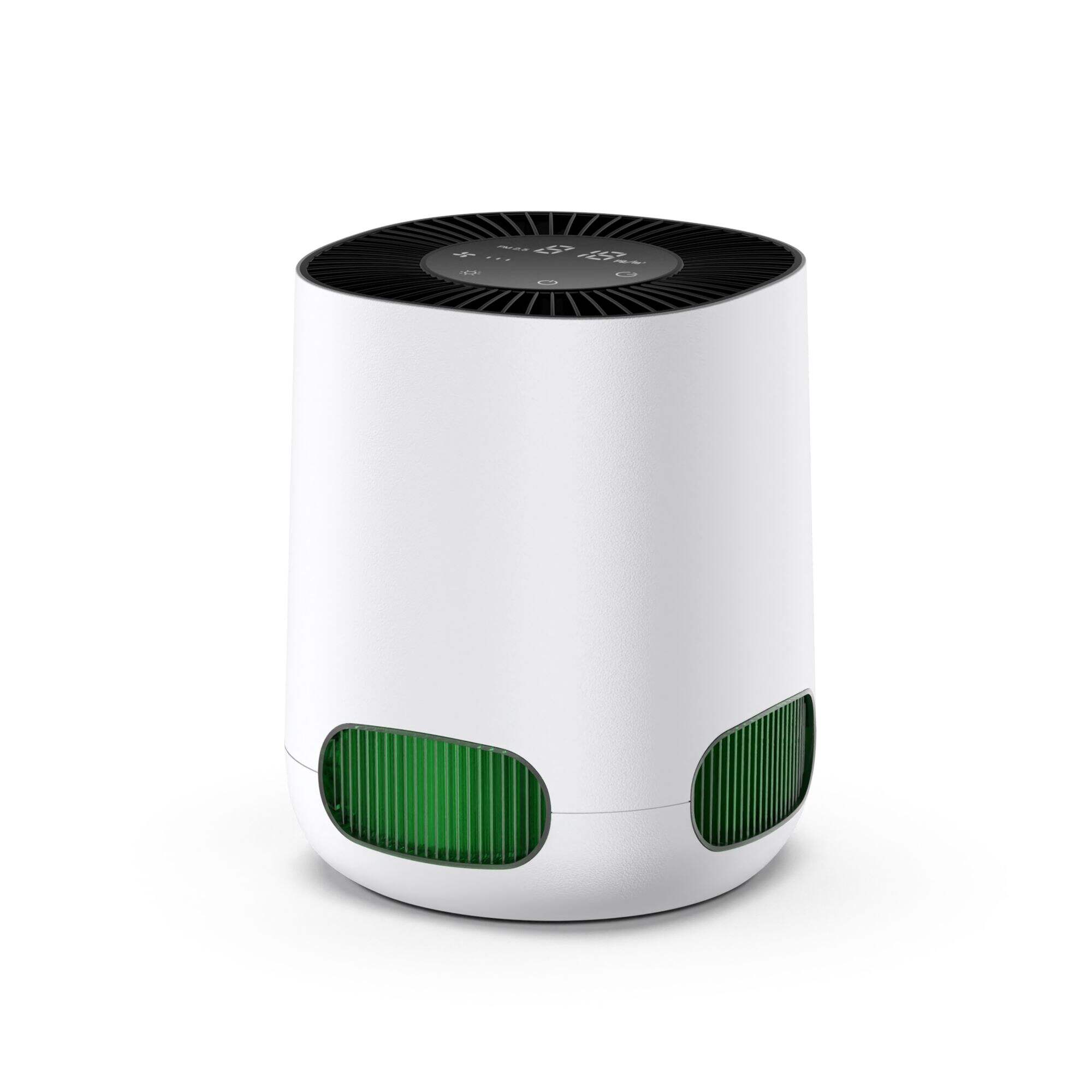Atmen Sie frische Luft: Innovationen in der Innenraumlufthygiene
Verständnis von Innovationen in der Indoor-Luftqualität
Die Indoor-Luftqualität (IAQ) ist ein entscheidendes Konzept, das sich auf die Sauberkeit und Gesundheit der Luft in Innenräumen bezieht. Sie umfasst die Überwachung von Schadstoffen, Allergenen und Feuchtigkeitsniveaus, um eine sichere Atemluft in Wohnungen, Büros und Industriegebäuden sicherzustellen. Eine umfassende Indoor-Luftmanagement betrifft verschiedene Schadstoffe wie mikrobielle Kontaminanten, flüchtige organische Verbindungen (VOCs) und feinstes Partikelmaterial, um eine gesunde Lebensumgebung bereitzustellen.
Die Bedeutung der IAQ erstreckt sich über reine Bequemlichkeit hinaus und betrifft die Gesundheit und das Wohlbefinden. Studien haben wiederholt einen starken Zusammenhang zwischen schlechter IAQ und Atemwegserkrankungen, Allergien sowie einer generellen Verschlechterung der Lebensqualität nachgewiesen. Wie von der Environmental Protection Agency (EPA) hervorgehoben, verbringen Menschen etwa 90 % ihrer Zeit drinnen, wo die Luftbedingungen erheblich die Gesundheit beeinflussen. Angemessene Ventilation und Luftreinigungssysteme sind entscheidend, um die Aussetzung mit schädlichen Schadstoffen zu reduzieren und so die Atemwegsgesundheit zu verbessern und Allersymptome zu verringern.
Aufkommende Technologien in der Indoor-Luftqualitäts-Innovation
Neueste Fortschritte in der Indoor-Luftqualitäts-Technologie (IAQ) heben intelligente Filter und Sensoren hervor, die von zentraler Bedeutung für das moderne Management der Luftqualität sind. Diese IoT-fähigen Filter sind darauf ausgelegt, Benutzer genau dann zu benachrichtigen, wenn eine Austauschnotwendigkeit besteht, was die Wartungskosten erheblich senkt. Durch die Integration intelligenter Sensoren können diese Systeme Echtzeit-Daten zur Luftqualität bereitstellen, wodurch Benutzer in der Lage sind, optimale Innenraumbedingungen mit weniger Aufwand zu gewährleisten. Dieser proaktive Ansatz stellt sicher, dass die Luft sauber bleibt und frei von Schadstoffen und Allergenen ist, was die Gesundheit und den Komfort insgesamt verbessert.
Ebenso beeindruckend sind die Entwicklungen in der Luftreinigungstechnologie, insbesondere bei der Verwendung von HEPA-Filtern. Moderne HEPA-Filtertechnologie weist außergewöhnliche Effizienzwerte auf und kann 99,97 % der Teilchen mit einer Größe von 0,3 Mikron, einschließlich feiner Partikel, einfangen. Diese bemerkenswerte Fähigkeit wird durch zahlreiche Studien bestätigt, die erhebliche Verbesserungen der Indoor-Luftqualität durch HEPA-Filterung zeigen. Solche Fortschritte in der Technologie von Luftreinigern machen sie zu unverzichtbaren Werkzeugen zur Bekämpfung von Schadstoffen und zur Gewährleistung eines gesünderen Lebensraums, insbesondere wenn man die zusätzlichen Vorteile berücksichtigt, die durch den gemeinsamen Einsatz von Luftbefeuchtern und Luftreinigern entstehen.
Innovative Luftreiniger erkunden
Innovative Luftreiniger haben verändert, wie wir uns mit der Indoor-Luftqualität auseinandersetzen, mit ihren vielfältigen Funktionen, die auf spezifische Bedürfnisse zugeschnitten sind. Ein perfektes Beispiel ist der Hausnutzung Mini-Tower-Luftreiniger mit H13-Hepa-Filter . Dieses Modell ist darauf ausgelegt, nahtlos in den häuslichen Rahmen zu passen, dank seines kompakten Designs, das keinen Raum im Heim einnimmt. Es reduziert effektiv Allergene und Schadstoffe und bietet eine sauberere Innenraumluft. Der Betriebslärm wird minimiert, um eine ruhige Atmosphäre zu fördern, was insbesondere für Familienhäuser von Vorteil ist.

Die Kompaktes Büro-Desktop-Luftreiniger mit H13-Hepa-Filter ist eine weitere hervorragende Innovation, die für Bürogebäude in Betracht gezogen werden sollte. Speziell entwickelt, um das Wohlbefinden der Mitarbeiter zu fördern, entfernt dieser Reiniger wirksam Kontaminanten, die sich auf Konzentration und Gesundheit auswirken könnten. Sauberere Luft kann zu weniger Krankentagen und erhöhter Produktivität führen, was einen überzeugenden Grund für Arbeitsplätze bietet, in solche Technologie zu investieren. Seine kompakte Größe bedeutet, dass er problemlos auf einem Schreibtisch stehen kann, ohne viel Platz einzunehmen, während er gleichzeitig leistungsstarke Reinigung bietet.

Für Schlafzimmerumgebungen die Berührungsteuerung kleiner Luftreiniger mit Nachtlicht sowohl Funktionalität als auch Atmosphäre bieten. Mit einfachen Touch-Steuerelementen bietet es den Benutzern eine intuitive Reinigungs-Erlebnis. Die Einbindung einer Nachttischleuchte erleichtert nicht nur die Orientierung nachts, sondern wurde auch entwickelt, um die Schlafqualität durch eine beruhigende Umgebung zu verbessern. Diese funktionsreiche Design macht es zu einer attraktiven Option für alle, die die Luftqualität in ihren Ruhezonen verbessern möchten.

Diese fortschrittlichen Geräte zeigen den Schnittpunkt von Technologie und Praxis im Alltag, indem sie die Gesundheit durch eine auf verschiedene Umgebungen zugeschnittene Verbesserung der Luftqualität fördern.
Feuchtigkeitsregelungslösungen in Innenräumen
Luftbefeuchter spielen eine entscheidende Rolle bei der Aufrechterhaltung optimaler Feuchtigkeitswerte, was direkt die Bequemlichkeit und das Wohlbefinden beeinflusst. Eine angemessene Feuchtigkeit kann trockene Haut verhindern, Atemwegsprobleme lindern und statische Elektrizität im Haus reduzieren. Wenn die Luft zu trocken ist, kann dies zu Unbehagen führen und gesundheitliche Probleme verschlimmern. Im Gegensatz dazu kann eine gut befeuchtete Umgebung das Wohlbefinden und die Bequemlichkeit steigern, wodurch ein Luftbefeuchter eine wertvolle Ergänzung für jeden Wohnraum darstellt.
Die richtige Wahl von Luftbefeuchtern für den Haushalt erfordert die Berücksichtigung mehrerer Faktoren. Beginnen Sie mit der Beurteilung der Zimmergröße, da dies die Kapazität des benötigten Luftbefeuchters bestimmt. Sie sollten außerdem zwischen Kalt- und Warmdunst-Luftbefeuchtern entscheiden, basierend auf Ihren persönlichen Vorlieben und Bedürfnissen. Kaltmist-Luftbefeuchter sind ideal für größere Räume und bieten ein erfrischendes Gefühl, während Warmmist-Modelle besser für kleinere Bereiche geeignet sind und eine gemütliche Wärme hinzufügen. Darüber hinaus sollten Sie die Wartungsanforderungen des Luftbefeuchters berücksichtigen, da regelmäßige Reinigung essenziell ist, um eine optimale Leistung und Haltbarkeit zu gewährleisten. Durch die Bewertung dieser Faktoren können Sie einen geeigneten Luftbefeuchter auswählen, der Ihre Innenraumluftqualität effektiv verbessert.
Integration von Luftqualitätsinnovationen in HVAC-Systeme
Die Integration von Luftqualitätsinnovationen in Klimaanlagensysteme (HVAC) verbessert erheblich sowohl die Energieeffizienz als auch die Raumluftqualität (IAQ). Intelligente Lüftungssteuerungen, eine zentrale Innovation, ermöglichen es diesen Systemen, die Raumluftbedingungen in Echtzeit zu überwachen und anzupassen. Diese Steuerungen verwenden intelligente Sensoren, um Schadstoffe zu erkennen und die Lüftungsrate zu optimieren, wodurch ein stetiger Zufuhrstrom sauerstoffreicher Außenluft gewährleistet wird, ohne übermäßige Energiekosten zu verursachen. Die Implementierung solcher Systeme trägt nicht nur zu einer gesünderen Innenraumumgebung bei, sondern erhöht auch die Lüftungseffizienz, indem sie die unnötige Rückzirkulation von abgestandener Luft verhindert.
Wärmewiedergewinnungs-Lüftungssysteme (ERVs) spielen eine entscheidende Rolle bei der Aufrechterhaltung angenehmer Raumtemperaturen, während sie Luftaustausch fördern. ERVs funktionieren, indem sie Wärme und Feuchtigkeit zwischen den ein- und austretenden Luftströmen übertragen, wodurch Verluste an Energie während der Ventilation effektiv minimiert werden. Dieser Ansatz stellt sicher, dass Gebäude energieeffizient bleiben, selbst wenn ausreichend frische Luft zirkuliert. Die Integration von ERVs in Klimaanlagen bietet einen ausgewogenen Ansatz zur Aufrechterhaltung von Temperatur- und Feuchtigkeitswerten, was allgemein Komfort und Nachhaltigkeit in Wohn- und Geschäftsräumen fördert. Zusammen erzeugen diese Innovationen einen bedeutenden Einfluss, indem sie die Luftqualität verbessern, ohne die Energiesparmaßnahmen zu beeinträchtigen.
Zukünftige Trends im Management der Innenraumlufthygiene
Die Zukunft der Indoor-Luftqualitätsmanagement wird stark von Fortschritten in der Künstlichen Intelligenz geprägt. AI-Algorithmen werden für prädiktive Analysen eingesetzt, was die Erkennung von Luftqualitätsproblemen ermöglicht, bevor sie zu ernsten Problemen werden. Zum Beispiel können auf KI basierende Sensoren kontinuierliche Luftdaten sammeln, analysieren und Einblicke in potenzielle zukünftige Luftverschmutzungen liefern. Dieser proaktive Ansatz gewährleistet schnelle Maßnahmen zur Sicherung von Innenräumen. Darüber hinaus optimiert die KI bei der Überwachung der Luftqualität den Betrieb von Lufthygiene-Systemen, was sowohl Energieeffizienz als auch verbessertes Management der Luftqualität fördert.
Nachhaltige Praktiken stehen ebenfalls im Vordergrund, um die Indoor-Luftqualität (IAQ) zu verbessern. Grünbauzertifikate werden zunehmend populär und betonen die Integration umweltfreundlicher Materialien und Pflanzen in den Bau. Diese Maßnahmen sind nicht nur ästhetisch, sondern auch funktional, da Pflanzen die Luft natürlich reinigen, indem sie schädliche Schadstoffe aufnehmen. Die Einbeziehung von Green Walls und umweltfreundlichen Materialien in Gebäudedesigns trägt erheblich zur besseren IAQ bei. Diese nachhaltigen Praktiken bieten sauberere Luft und harmonieren mit dem wachsenden ökologischen Bewusstsein, indem sie Natur mit moderner Architektur verbinden für gesündere Lebensräume.

 EN
EN
 AR
AR
 NL
NL
 FR
FR
 DE
DE
 EL
EL
 HI
HI
 IT
IT
 JA
JA
 KO
KO
 PL
PL
 PT
PT
 ES
ES
 ID
ID
 VI
VI
 TH
TH
 TR
TR
 MS
MS
